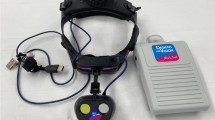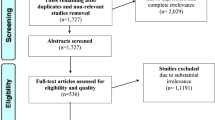Abstract
During glioma resection, 5-aminolevulinic acid (5-ALA) and fluorescein sodium (Fl-Na) are used for photodynamic tumor visualization. The objective of this study was to evaluate the pathological findings of the boundary zone between the tumor and adjacent normal brain in glioblastoma patients undergoing simultaneous double staining with 5-ALA and Fl-Na during surgery. Eight patients received 5-ALA (20 mg/kg orally) before the induction of general anesthesia, and Fl-Na (20 mg/kg) was administered intravenously before the dural incision was performed. The tumor bulk was removed under the guidance of Fl-Na staining alone using conventional white light. Subsequently, residual tumor was removed under the guidance of both fluorescent agents within functionally safe limits until both were visibly undetectable. Twenty specimens exhibiting different staining intensities of both agents were obtained. The vessel index (VI) was calculated from CD31 immunohistochemistry (IHC) samples. Boundary zone tumor cells were detected by IHC for olig2, and were expressed as the olig2 index (OLI). The VI was significantly higher in Fl-Na-positive areas than in Fl-Na-negative areas (p = 0.0005). In contrast, the OLI was significantly higher in 5-ALA-positive areas than in 5-ALA-negative areas (p = 0.0149). 5-ALA-positive/Fl-Na negative areas were observed in 7 patients. These findings indicate that Fl-Na accumulates in areas with a disrupted blood–brain barrier, and that 5-ALA fluorescence is dependent on tumor cell protoporphyrin IX metabolism. In conclusion, 5-ALA was better for detecting tumor cells in the boundary zone than was Fl-Na. Of note, tumor cells existed outside the fluorescence-stained boundaries of both agents.



Similar content being viewed by others
References
Han ZX, Wang XX, Zhang SN, Wu JX, Qian HY, Wen YY, Tian H, Pei DS, Zheng JN (2014) Downregulation of PAK5 inhibits glioma cell migration and invasion potentially through the PAK5-Egr1-MMP2 signaling pathway. Brain Tumor Pathol 31(4):234–241
Sanai N, Polley MY, McDermott MW, Parsa AT, Berger MS (2011) An extent of resection threshold for newly diagnosed glioblastomas. J Neurosurg 115(1):3–8
Hefti M, von Campe G, Moschopulos M et al (2008) 5-aminolevulinic acid induced protoporphyrin IX fluorescence in high-grade glioma surgery: a 1-year experience at a single institutuion. Swiss Med Wkly 138(11–12):180–185
Shinoda J, Yano H, Yoshimura S, Okumura A, Kaku Y, Iwama T, Sakai N (2003) Fluorescence-guided resection of glioblastoma multiforme by using high-dose fluorescein sodium. Technical note. J Neurosurg 99(3):597–603
Stummer W, Pichlmeier U, Meinel T, Wiestler OD, Zanella F, Reulen HJ (2006) Fluorescence-guided surgery with 5-aminolevulinic acid for resection of malignant glioma: a randomised controlled multicentre phase III trial. Lancet Oncol 7(5):392–401
Stummer W, Reulen HJ, Meinel T, Pichlmeier U, Schumacher W, Tonn JC, Rohde V, Oppel F, Turowski B, Woiciechowsky C, Franz K, Pietsch T (2008) Extent of resection and survival in glioblastoma multiforme: identification of and adjustment for bias. Neurosurgery 62(3):564–576
Colditz MJ, Jeffree RL (2012) Aminolevulinic acid (ALA)-protoporphyrin IX fluorescence guided tumour resection. Part 1: clinical, radiological and pathological studies. J Clin Neurosci 19(11):1471–1474
Kuroiwa T, Kajimoto Y, Ohta T (1998) Development of a fluorescein operative microscope for use during malignant glioma surgery: a technical note and preliminary report. Surg Neurol 50(1):41–48
Idoate MA, Díez Valle R, Echeveste J, Tejada S (2011) Pathological characterization of the glioblastoma border as shown during surgery using 5-aminolevulinic acid-induced fluorescence. Neuropathology 31(6):575–582
Stummer W, Novotny A, Stepp H, Goetz C, Bise K, Reulen HJ (2000) Fluorescence-guided resection of glioblastoma multiforme by using 5-aminolevulinic acid induced porphyrins: a prospective study in 52 consecutive patients. J Neurosurg 93(Suppl 6):1003–1013
Stummer W, Stocker S, Wagner S, Stepp H, Fritsch C, Goetz C, Goetz AE, Kiefmann R, Reulen HJ (1998) Intraoperative detection of malignant gliomas by 5-aminolevulinic acid-induced porphyrin fluorescence. Neurosurgery 42(Suppl 3):518–525
Schwake M, Stummer W, Suero Molina EJ, Wölfer J (2015) Simultaneous fluorescein sodium and 5-ALA in fluorescence-guided glioma surgery. Acta Neurochir 157(5):877–879
Piccirillo SG, Dietz S, Madhu B, Griffiths J, Price SJ, Collins VP, Watts C (2012) Fluorescence-guided surgical sampling of glioblastoma identifies phenotypically distinct tumour-initiating cell populations in the tumour mass and margin. Br J Cancer 107(3):462–468
Kennedy J, Pottier R (1992) Endogenous protoporphyrin IX, a clinically useful photosensitizer for photodynamic therapy. Photochem Photobiol 14(4):275–292
Rey-Dios R, Hattab EM, Cohen-Gadol AA (2014) Use of intraoperative fluorescein sodium fluorescence to improve the accuracy of tissue diagnosis during stereotactic needle biopsy of high-grade gliomas. Acta Neurochir 156(6):1071–1075
Lee J, Baird A, Eliceiri BP (2011) In vivo measurement of glioma induced vascular permeability. Methods Mol Biol 763:417–422
Roberts DW, Valdés PA, Harris BT, Fontaine KM, Hartov A, Fan X, Ji S, Lollis SS, Pogue BW, Leblond F, Tosteson TD, Wilson BC, Paulsen KD (2011) Coregistered fluorescence-enhanced tumor resection of malignant glioma: relationships between δ-aminolevulinic acid-induced protoporphyrin IX fluorescence, magnetic resonance imaging enhancement, and neuropathological parameters. Clinical article. J Neurosurg 114(3):595–603
Ligon KL, Alberta JA, Kho AT, Weiss J, Kwaan MR, Nutt CL, Louis DN, Stiles CD, Rowitch DH (2004) The oligodendroglial lineage marker OLIG2 is universally expressed in diffuse gliomas. J Neuropathol Exp Neurol 63(5):499–509
Ligon KL, Huillard E, Mehta S, Kesari S, Liu H, Alberta JA, Bachoo RM, Kane M, Louis DN, Depinho RA, Anderson DJ, Stiles CD, Rowitch DH (2007) Olig2-regulated lineage-restricted pathway controls replication competence in neural stem cells and malignant glioma. Neuron 53(4):503–517
Diaz RJ, Dios RR, Hattab EM, Burrell K, Rakopoulos P, Sabha N, Hawkins C, Zadeh G, Rutka JT, Cohen-Gadol AA (2015) Study of the biodistribution of fluorescein in glioma-infiltrated mouse brain and histopathological correlation of intraoperative findings in high-grade gliomas resected under fluorescein fluorescence guidance. J Neurosurg 122(6):1360–1369
Schebesch KM, Proescholdt M, Höhne J, Hohenberger C, Hansen E, Riemenschneider MJ, Ullrich W, Doenitz C, Schlaier J, Lange M, Brawanski A (2013) Sodium fluorescein-guided resection under the YELLOW 560 nm surgical microscope filter in malignant brain tumor surgery—a feasibility study. Acta Neurochir 155(4):693–699
Kobayashi H, Hirata K, Yamaguchi S, Terasaka S, Shiga T, Houkin K (2013) Usefulness of FMISO-PET for glioma analysis. Neurol Med Chir 53(11):773–778
Takenaka S, Asano Y, Shinoda J, Nomura Y, Yonezawa S, Miwa K, Yano H, Iwama T (2014) Comparison of (11)C-methionine, (11)C-choline, and (18)F-fluorodeoxyglucose-PET for distinguishing glioma recurrence from radiation necrosis. Neurol Med Chir 54(4):280–289
Miwa K, Shinoda J, Yano H, Okumura A, Iwama T, Nakashima T, Sakai N (2004) Discrepancy between lesion distributions on methionine PET and MR images in patients with glioblastoma multiforme: insight from a PET and MR fusion image study. J Neurol Neurosurg Psychiatry 75(10):1457–1462
Díez Valle R, Tejada Solis S, Idoate Gastearena MA, García de Eulate R, Domínguez Echávarri P, Aristu Mendiroz J (2011) Surgery guided by 5-aminolevulinic fluorescence in glioblastoma: volumetric analysis of extent of resection in single-center experience. J Neurooncol 102(1):105–113
Stummer W, Tonn JC, Mehdorn HM, Nestler U, Franz K, Goetz C, Bink A, Pichlmeier U; ALA-Glioma Study Group (2011) Counterbalancing risks and gains from extended resections in malignant glioma surgery: a supplemental analysis from the randomized 5-aminolevulinic acid glioma resection study. Clinical article. J Neurosurg 114(3):613–623
Arita H, Kinoshita M, Kagawa N, Fujimoto Y, Kishima H, Hashimoto N, Yoshimine T (2012) ¹¹C-methionine uptake and intraoperative 5-aminolevulinic acid-induced fluorescence as separate index markers of cell density in glioma: a stereotactic image-histological analysis. Cancer 118(6):1619–1627
Koc K, Anik I, Cabuk B, Ceylan S (2008) Fluorescein sodium-guided surgery in glioblastoma multiforme: a prospective evaluation. Br J Neurosurg 22(1):99–103
Jacquesson T, Ducray F, Maucort-Boulch D, Armoiry X, Louis-Tisserand G, Mbaye M, Pelissou-Guyotat I, Guyotat J (2013) Surgery of high-grade gliomas guided by fluorescence: a retrospective study of 22 patients. Neurochirurgie 59(1):9–16
Acknowledgements
We would like to thank Editage (http://www.editage.jp) for English language editing.
Funding
This study was not supported by any external sources of funding.
Author information
Authors and Affiliations
Corresponding author
Ethics declarations
Conflict of interest
Dr. T. Iwama accepted research expenses from Otsuka Pharmaceutical Co. Ltd. and Ogaki Tokushukai Hospital in 2013. The remaining authors declare no conflicts of interest.
Ethical approval
All procedures were in accordance with the ethical standards of the institutional and/or national research committee and with the 1964 Helsinki declaration and its later amendments or comparable ethical standards.
Informed consent
Informed consent was obtained from all individual participants included in the study.
Electronic supplementary material
Below is the link to the electronic supplementary material.
Rights and permissions
About this article
Cite this article
Yano, H., Nakayama, N., Ohe, N. et al. Pathological analysis of the surgical margins of resected glioblastomas excised using photodynamic visualization with both 5-aminolevulinic acid and fluorescein sodium. J Neurooncol 133, 389–397 (2017). https://doi.org/10.1007/s11060-017-2445-5
Received:
Accepted:
Published:
Issue Date:
DOI: https://doi.org/10.1007/s11060-017-2445-5




